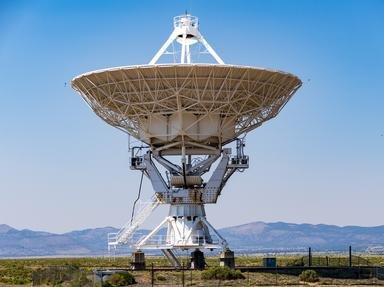Quiz Answer Key and Fun Facts
1. What is the apparent magnitude of the star closest to Earth?
2. What is the axial tilt, at its equator, of Earth's only natural satellite?
3. Which type of stars are the smallest?
4. Which of the following is an example of a blue-white supergiant star?
5. What is the distance of Neptune from the sun in astronomical units?
6. Which type of galaxy accounts for most of the galaxies in the universe?
7. Which physical unit is represented by a parsec?
8. Who proposed the heliocentric theory?
9. When it was discovered in 2005, which became the largest dwarf planet in our solar system?
10. When was the first pulsar discovered?
Source: Author
ABHILASHA40
This quiz was reviewed by FunTrivia editor
rossian before going online.
Any errors found in FunTrivia content are routinely corrected through our feedback system.

